The Quest to Save Baltimore’s Iconic Berger Cookie
A looming ban on trans fats threatens the city’s beloved dessert.
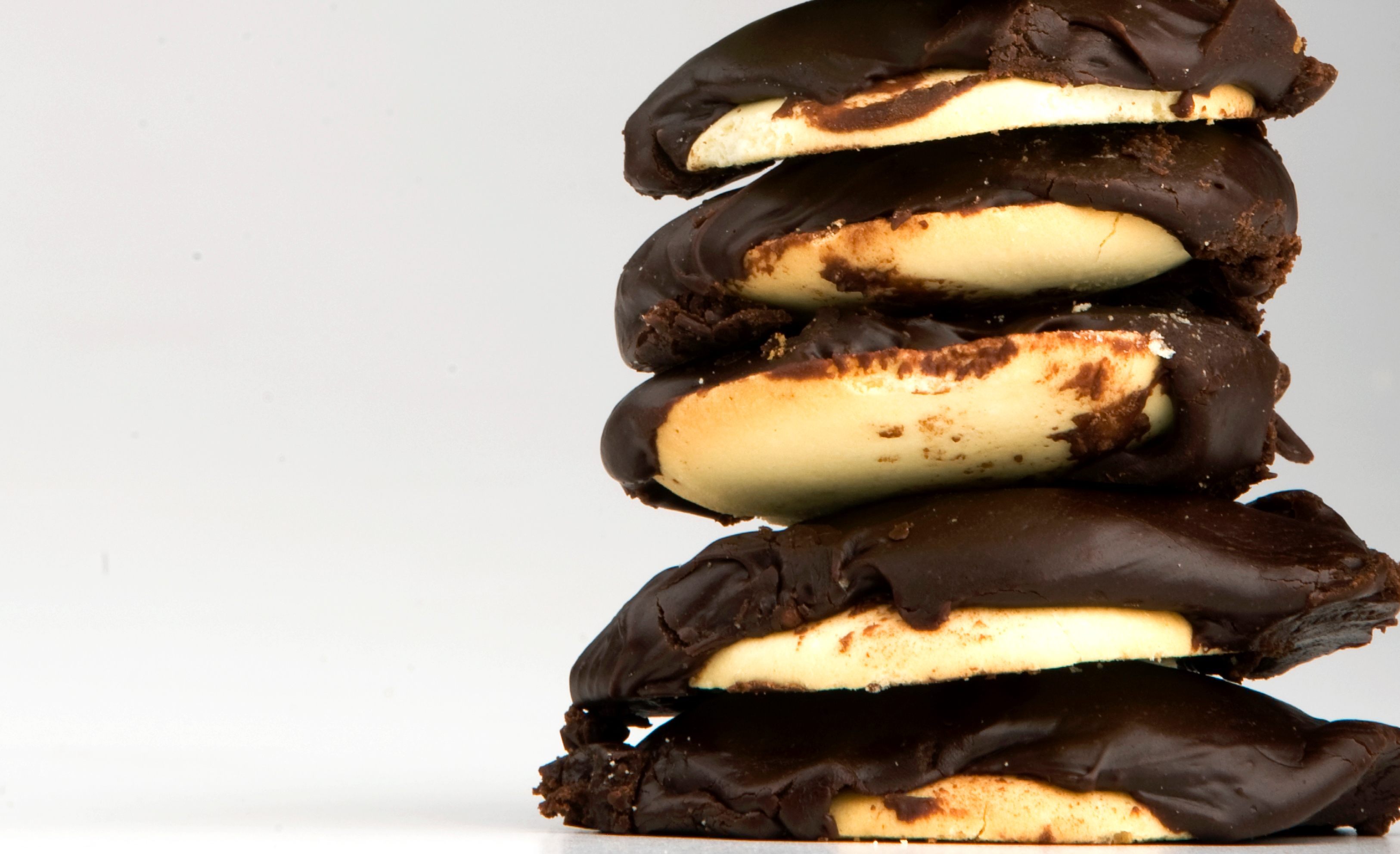
In 2018, an Obama-era ban on trans fats will come into effect, and it will likely affect at least one of your beloved childhood snacks: Oreos, Cheetos, Pillsbury biscuits, and even Girl Scout cookies. But for one Baltimore bakery, the stakes of the ban are much higher, as their product, Berger Cookies, happens to be one of the city’s most adored food icons.*
Trans fats, a man-made fat that improves the shelf life of a product by converting vegetable oils to solid fat, have long been a source of controversy in the packaged foods industry. Research has shown that they contribute significantly to heart disease, diabetes, and high cholesterol—more so than other, more natural sources of fat.
The packaged food world relies on trans fats to maintain the stability of their products’ flavor and texture. But for large companies like Nestle and General Mills—who have been slowly transitioning their products away from trans fats—the ban, at this point, is just a small adjustment. For Berger Cookie producer Charlie DeBaufre, however, the ban is an existential crisis.

The Berger Cookie is a simple concept: a thin, semi-sweet wafer with a roof of about half an inch of thick chocolate fudge. The genius lies in the proportions—each cookie is equivalent to scoring the corner slice of a cake, the slice where each bite comes with a double dose of frosting. The fudge is solid and rich and melts in your mouth, but remains grounded by the sturdy wafer.
No one knows how, exactly, the Berger Cookie was invented. But the first recipe came about sometime after 1835, when founder Henry Berger immigrated from Germany to East Baltimore with his brother, George, and started a bakery. The primary business was cakes, but they soon started selling cookies on the side. DeBaufre envisions it as a happy accident. “Someone probably spilled chocolate on a cookie,” he says, “and because they didn’t want to lose money, they just picked up the cookies and started selling them.”
DeBaufre’s father worked for the bakery for a number of years, before deciding to purchase it when the previous owner, Charles Russell (who bought the bakery from the Berger family), retired. DeBaufre, a feisty individual with a booming voice, worked at the bakery as a kid, and has owned it since 1994. He’s fiercely loyal to his city: He wears a vintage Berger Cookies cap, sips his coffee out of a Baltimore Ravens mug, and regales me with stories about his neighborhood of Cherry Hill.
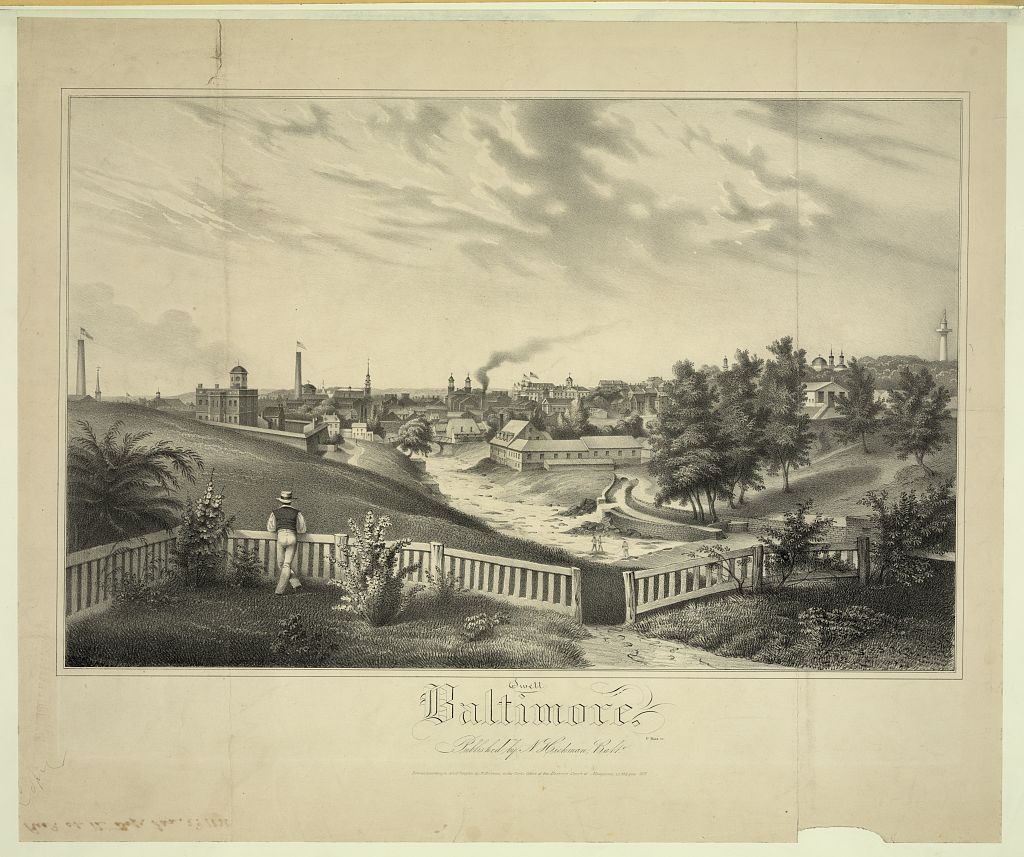
When DeBaufre took over, he pushed the cookie to the forefront of the business, and Bergers became an overnight sensation when they were mentioned as part of a holiday gifting piece in the Baltimore Sun in 1995. That month, the DeBaufre family went from getting about 300 Berger Cookie orders during the holidays to about 10,000. Berger Cookies now make up about 89 percent of the business.
The Berger Cookie has become a fixture of Baltimore culture—a point of pride for residents, and an essential item on lists of top city activities. You’ll find Berger Cookies in hotel minibars, drug stores, and supermarkets, and for sale at Baltimore Orioles games. Couples have constructed entire wedding cakes out of Berger Cookies, and local ice cream shops sell Berger Cookie flavors.
When Hurricane Irene hit in 2011, the city experienced a panic not over the downed power lines, but over the waterlogging of the Berger factory, which caused a shortage of the cookies. Linda Busick, a local store clerk, told The Baltimore Sun, “We’ve had a few pregnant women and elderly people come in three, four days in a row and say, ‘Still no Bergers? Still no Bergers?’ I will be so happy when I see that big truck pull up to the front door. I will be ecstatic.”
But here’s the rub: One of the most essential ingredients in the Berger Cookie is trans fats. Trans fats are what make the chocolate super creamy, prevent the fat and the water in the dough from separating (which would yield an overly crumbly cookie), and keep the cookie stable in both very warm and very cold settings.

When the ban was announced in 2015, DeBaufre was shellshocked. “I’m sorry, but you are worried about trans fats, which might cause a heart problem, when cigarettes, which are deadly, are still legal?” he says, emphatic. “The government is getting too deep into our lives.”
A few years earlier, DeBaufre had tested a version of the cookie baked with a trans fat-free fudge, made hastily by his chocolate purveyor in anticipation of the ban. “The cookie was so disgusting that I spit it out,” he says, sticking his tongue out in disdain. “It was like a combination of burnt hair and … ” he pauses, trying to find the exact right word. “Intestines! Yes, I remember literally thinking, ‘I am going to be out of business.’”
As the ban approaches, DeBaufre’s job has become devoted largely to testing trans fat-free margarines and fudge bases—made by various manufacturers putting out trans fat-free products to placate their packaged food customers—and trying to discover some alchemy that will recreate the iconic cookie.
DeBaufre refers to the past year as “frustrating and scary,” as so many of his trans fat-free experiments have been failures. “I have spent $10,000 trying to get this worked out. I am not a big business. I don’t have an R&D Department. I have to shut down production for a few hours, still pay people for labor, and then most of the product gets trashed. It’s tough.”

During low points in the process, he says, “I started thinking about going back to pushing cake, like we used to. I didn’t know that the cookie was going to last.”
He fears that no matter what kind of trans fat-free version he puts out, people will notice the cookie is different, and the Berger may cease to be a Baltimore icon. “Twenty percent of my gray hair is caused by that fear. I didn’t want some other Jack to come in and say, ‘Here is this new cookie of Baltimore.’ Not on my watch!” His voice rises. “I feel I have a responsibility to the city of Baltimore.”
“Baltimore is a city that is fiercely traditional and nostalgic,” says Kathleen Godwin, a former Baltimore resident. “Berger Cookies represent that—they are the kind of thing that people’s grandparents and great-grandparents had. They’ve just always been around. To take it away may threaten this everyday part of Baltimore culture.”
The day I visit the factory, DeBaufre is testing out two new options for margarine—one that is palm-oil based, and the other soy-based (he’s mostly settled on a new fudge base).
The factory is an unassuming, no-frills operation. Butter and sugar beat quietly in the back, machines drop mini squirts of batter onto aluminum trays, and wafers bake in a rotating oven before cooling in red crates. Workers hand-dip the cooled wafers in big steel bowls of fudge, and the Bergers dry overnight. Eventually they’re packed into mahogany boxes branded with the old-timey Berger logo and an orange label.
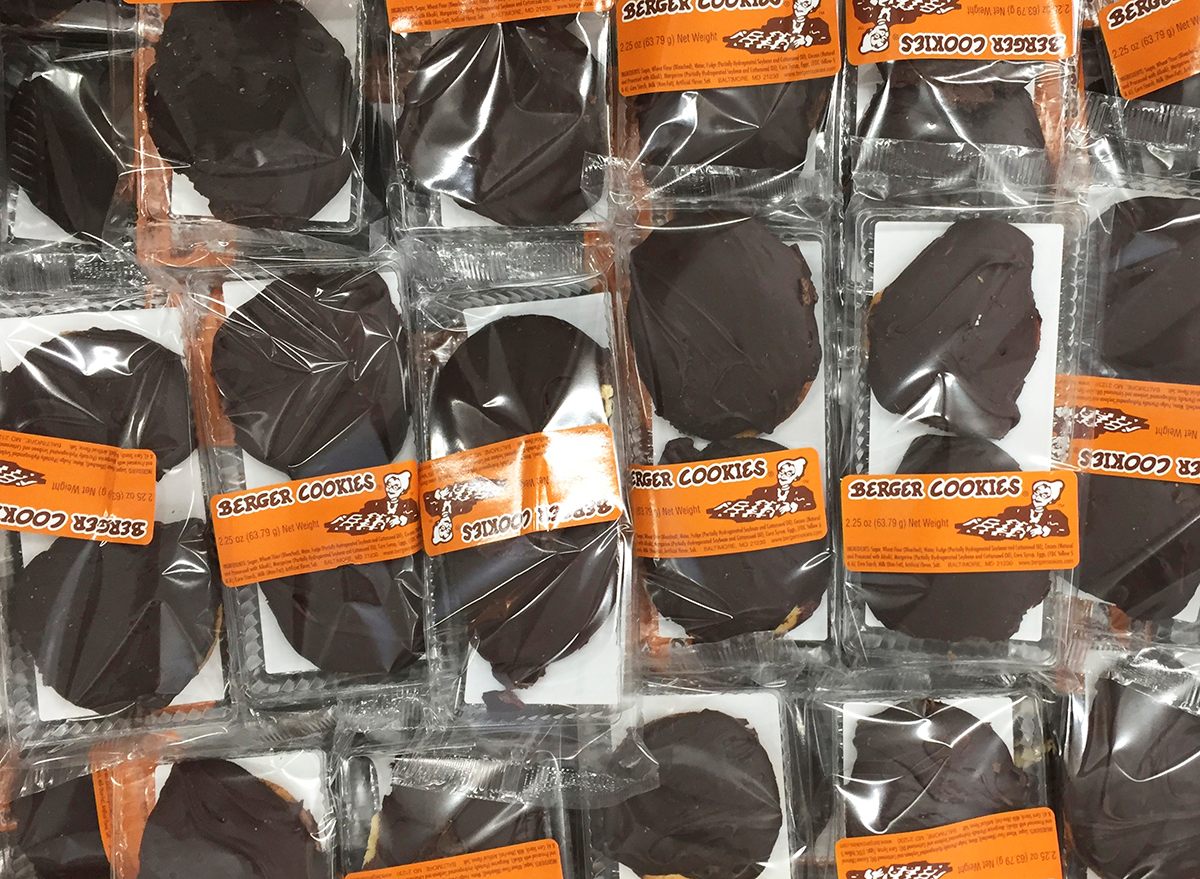
DeBaufre leads me to a rolling rack of cookies that has been set aside—the best of the trans fat-free experiments. I first taste the original Berger Cookie. It’s the topcoat that makes it—you can sink your teeth into the chocolate, which is luscious and deeply flavored, like the platonic ideal of an indulgent piece of fudge.
The next cookie is the palm-oil one. In appearance, it’s indistinguishable from the original Berger. It has the same heft, the same matte coat of chocolate on top, the same “tails” (what DeBaufre calls the wayward bits of chocolate that stick off the end of the cookies). But the taste is slightly off: It has a top note of sugar, not of chocolate. It’s overly cloying. The wafer is a bit too firm.
The second batch, with the soy-based margarine, fares better for me. I like that it’s not as sweet, more forward in chocolate flavor. The fudge tastes slightly more frosting-like than fudge-like, but the cookie, overall, has that undeniable craveability of the original.
DeBaufre, a boisterous, tell-it-like-it-is sort of guy, is uncharacteristically apologetic as I taste the cookies—mentioning that certain ones haven’t had enough time to cool, or that the wafer may not be quite as pliable. He keeps giving me this look of equal optimism and despair.
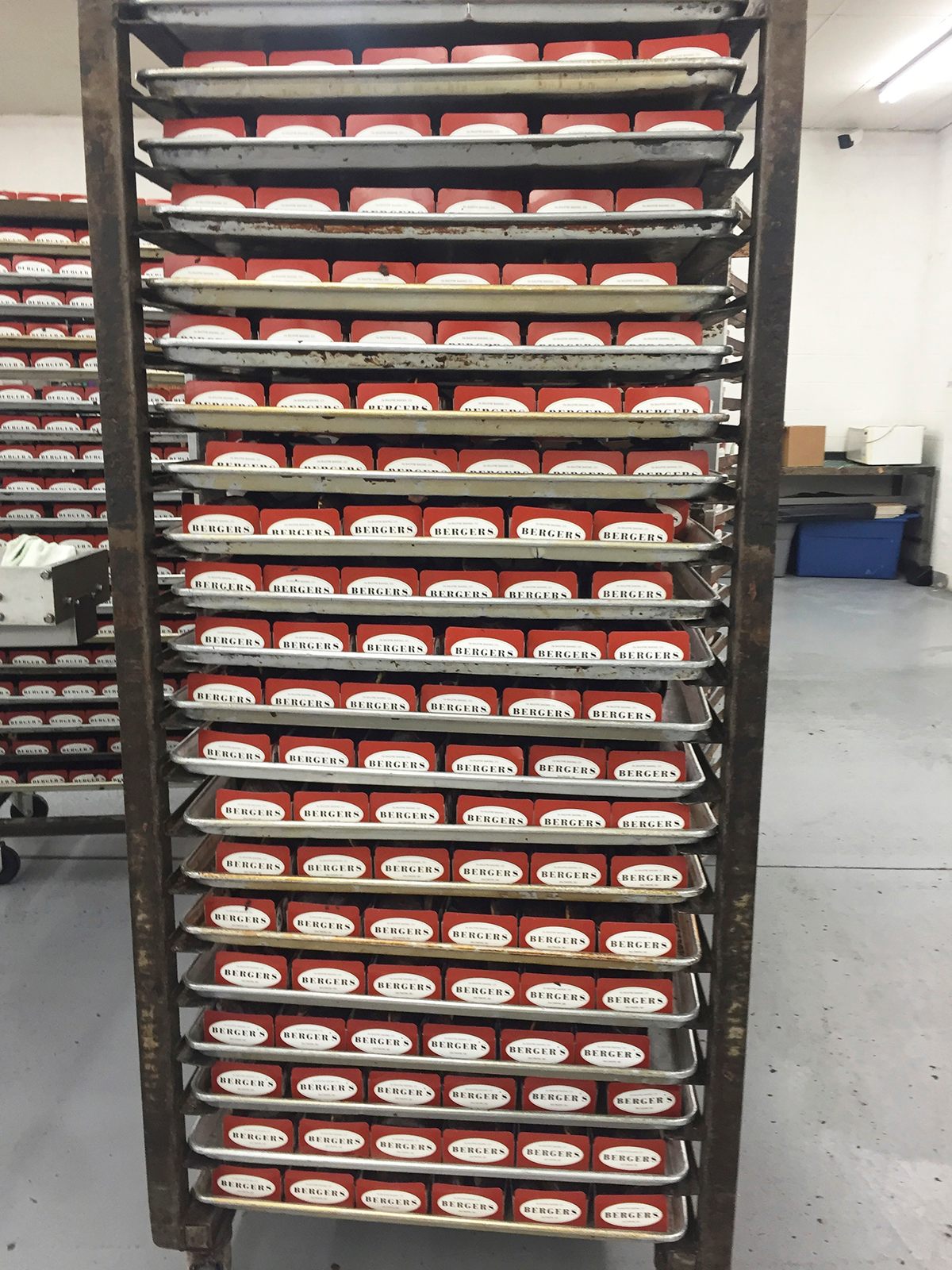
But when I tell him I like the soy-based cookie, a smile breaks across his face—like Willy Wonka in that infamous office scene at the end of Willy Wonka & the Chocolate Factory. He didn’t want to tell me prior to the taste test, but this is the closest he has come to a product that could live up to the legendary status of the Berger. “I don’t think customers will be disappointed—that’s how much I approve of this cookie,” he says, grinning.
I ask if he plans to hold tests with local store owners, or get any other kind of feedback. He shakes his head. “When I know they are ready, they are ready.”
For DeBaufre, though, this high may be temporary. He knows that the food industry, in general, is shifting toward transparency and away from artificial ingredients. He’s already thinking about ways to replace the high fructose corn syrup in his cookies, as he’s certain that’s the next item the government will try to ban. Still, he’s committed to the Baltimore tradition, and he’ll keep churning out Berger Cookies until someone tells him he can’t anymore.
This is the potential trade-off we face if we reform our food system in such a direction: a ban on sugary nostalgia, and childhood classics that just don’t taste the same, or disappear entirely.
“A lot of things die off,” he sighs. “I realize that. But all I know is making cookies. It’s what I’ve been doing since I was 10. I can’t leave it behind.”
*Update 11/25/17: After our reporter visited the factory, Berger Cookie producer Charlie DeBaufre learned that his ingredients supplier switched to a fudge that contains no trans fats. The change in taste is so subtle that DeBaufre did not realize that his Berger cookies only contain trace amounts of trans fats—within the ban’s legal limit.
Gastro Obscura covers the world’s most wondrous food and drink.
Sign up for our regular newsletter.



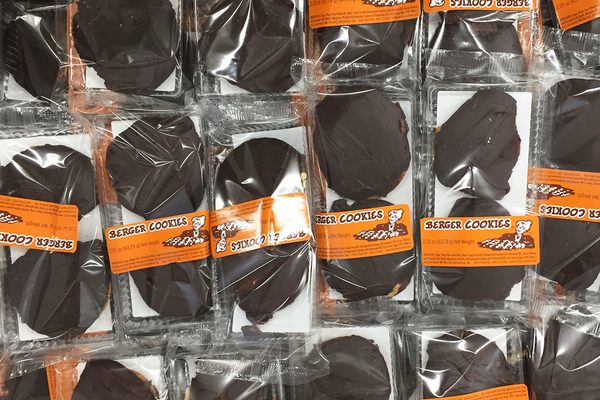


















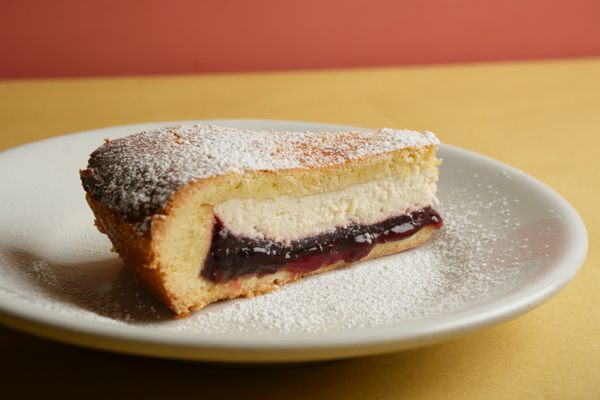



Follow us on Twitter to get the latest on the world's hidden wonders.
Like us on Facebook to get the latest on the world's hidden wonders.
Follow us on Twitter Like us on Facebook